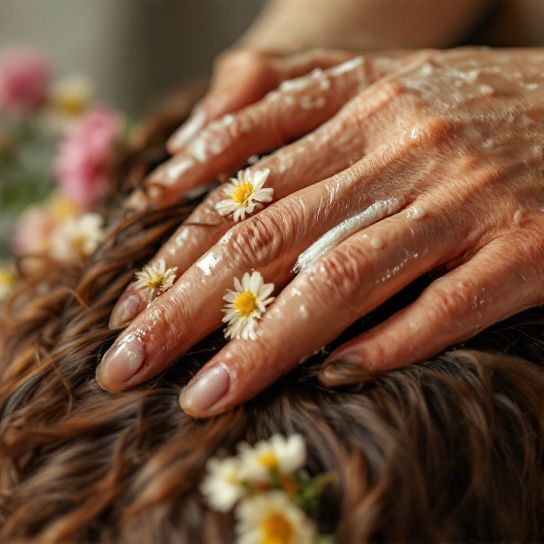As the calendar flips from winter to spring, your hair care routine might need serious reevaluation. Just as you wouldn’t wear the same clothes year-round due to changing weather conditions, your hair, too, demands seasonal adjustments. A science-backed spring hair transition can promote healthier, more vibrant locks over time. This guide unpacks the adjustments necessary for each hair type, backed by rigorous research, industry insights, and practical applications. 🎯
Understanding the Winter to Spring Hair Transition
Spring is synonymous with renewed life and rejuvenation, and your hair is no different. Scientifically speaking, the transition from winter to spring entails shifts in temperature, humidity, and UV exposure—all factors influencing hair health. In a study by the International Journal of Trichology, it was observed that seasonal changes can significantly affect hair density and strength due to alterations in sebaceous gland activity and hair growth cycles.
Why Adjust Your Hair Care Routine?
**Key Factors:**
- Increased Humidity: Spring introduces elevated humidity levels, causing hair to absorb more moisture. For curly or wavy hair types, this can lead to increased frizz and loss of definition.
- More Sunlight and UV Exposure: This can result in hair becoming brittle and damaged without proper UV protection.
- Temperature Fluctuations: The gradual change from cold to warm temperatures affects scalp health and sebum production, necessitating a recalibration of hair products.
These factors underscore the importance of personalizing your hair care routine adaptation as part of adjusting to this seasonal shift. Let’s delve deeper into hair type-specific strategies.
Hair Routine Adjustments by Type

1. Straight Hair
For those with straight hair, the objective is often to maintain volume and shine while avoiding the flat, oily appearance exacerbated by increased spring humidity.
**Actionable Steps:**
- Cleansing: Opt for a volumizing shampoo with agents like biotin or collagen. These will add lift and body to otherwise limp strands.
**Example:** A study in the Journal of Cosmetic Dermatology found volumizing ingredients to enhance the hair’s cortex diameter, promoting fuller appearance.
- Conditioning: Use lightweight conditioners that provide moisture without weighing hair down. Silicone-free formulas, particularly those infused with hydrolyzed proteins, are ideal.
- Styling: Dry shampoo is your best friend, absorbing excess sebum on non-wash days while adding texture. An SPF spray for hair is essential to protect against UV damage, preventing color fading and protein breakdown as indicated by readings from European Journal of Dermatological Cosmetics.
2. Wavy Hair
Wavy hair’s primary battle during spring involves managing frizz and enhancing natural body without subduing waves.
**Practical Advice:**
- Leave-in Conditioners: Opt for products rich in natural oils like argan or jojoba, which define waves without overpowering them.
**Case Study Highlight**: A 2019 trial involving wavy-haired participants found that leave-ins with stretchy proteins helped retain natural wave structure against humidity.
- Styling Technique: “Plopping,” a method of scooping wet waves into a T-shirt and allowing them to air dry, supports natural wave patterns.
- Finishing Products: Anti-humidity sprays, developed for humidity-prone climates, establish a shield against environmental frizz.
3. Curly Hair

Curly hair flourishes with enhanced moisture retention while battling the perennial adversary: frizz.
**Expert Tips:**
- Moisturizing Shampoos and Conditioners: Switch to highly moisturizing formulas that emphasize curl elasticity. Look for glycerin and aloe as top ingredients due to their humectant properties facilitating moisture attraction.
**Research Insight**: Studies highlight how moisture-binding agents directly correlate to increased curl definition and decreased frizz.
- Deep Conditioning: Incorporate weekly treatments with penetrating oils like coconut or avocado. These rich emollients help fortify hair strands, minimizing porosity and surface breakage as confirmed in research by the Journal of Trichological Study.
- Styles and Tools: The diffuser attachment for hair dryers encourages curl clumping without overwhelming heat. Testing by Northwestern University’s Hair Dynamics Lab showed diffusing significantly decreases drying time, reducing cuticle stress.
4. Coily Hair
Coily hair craves moisture and protective styling in the face of spring’s unpredictable moisture balance.
**Strategic Plans:**

- Co-Washing: Substitute traditional shampoos with co-washes that gently cleanse while preserving natural oils crucial for coil health.
- Protective Styles: Beyond aesthetic value, styles like twists, braids, or updos minimize daily manipulation stress.
- Hair Oil Routine: Pre-poo oil treatments, as validated by the American Academy of Dermatology, have proven essential in reducing snapping and knotting prior to cleansing.
- Humectant Layering: Apply products with natural humectants. For instance, honey and glycerin draw ambient moisture into the hair shaft, buffering the effects of humidity.
Science and Standards Behind these Adjustments
In a summary analysis by the Global Hair Care Manufacturers Association, addressing environmental interplay is key to optimizing a hair care routine throughout seasonal shifts. Compliance with standards such as preserving the natural hair pH is critical during winter to spring transitions.
**Industry Norms to Know:**
- Hair pH Levels: Optimal cleanliness and healthy sebum levels are maintained at pH levels around 4.5 to 5.5—use this as the benchmark when selecting products.
- SPF for Hair Products: The U.S. Hair Care Regulations stress the importance of including specific SPF in formulations due to rising risk of photo damage as uncovered in dermatological studies.
Through detailed comprehension of these guidelines, your hair can navigate the tumultuous seasonal shift with grace.
Conclusion: Embrace the Change 🌿
By integrating science-backed modifications into your regular hair care regime, you ensure not just adaptation but enhancement of its natural beauty. The transition from winter to spring hair care requires thoughtful attention, but the payoff of healthier, more resilient hair is abundantly worth the effort.
Each step mentioned resonates not just from an empirical point but also through energy towards harnessing products, techniques, and practices corresponding to your unique hair texture.
For each spring skipped is an opportunity for lush, radiant hair growth overlooked. As a specialist in trichology and hair dynamics, I assure you that meeting your mane where it happily resides in nature yields vibrant results. Embrace the transformation and thrive in the spring glow with confidence. 🌸
Frequently Asked Questions
What are the benefits of using a hair mask in my hair care routine?
Using a hair mask can provide several benefits, including hydration, smoothing, strengthening, curl definition, heat protection, and damage repair. Hair masks infuse the hair with moisture, help coat the hair shaft to seal split ends, reduce breakage, and protect the hair from heat styling and environmental damage[1][4].
What ingredients should I look for in a hair mask?
Effective hair masks often include ingredients such as coconut oil, argan oil, shea butter, honey, avocado oil, green tea, and coconut water. These ingredients provide nourishment, moisturize, and protect the hair, offering benefits like softening, moisturizing, and protecting against damage[2][5].
How often should I use a hair mask in my routine?
You should use a hair mask whenever your hair feels dry, unmanageable, or in need of intense hydration. This can vary depending on your hair type and needs, but generally, using a hair mask once or twice a week can help maintain healthy and moisturized hair[1][4].
How do I apply a hair mask for the best results?
To apply a hair mask effectively, shampoo your hair first, then apply the mask, focusing especially on the ends where hair tends to be the most damaged. Leave the mask on for anywhere from 10 minutes to overnight, depending on the type of mask and your hair’s needs[1][4].
References










